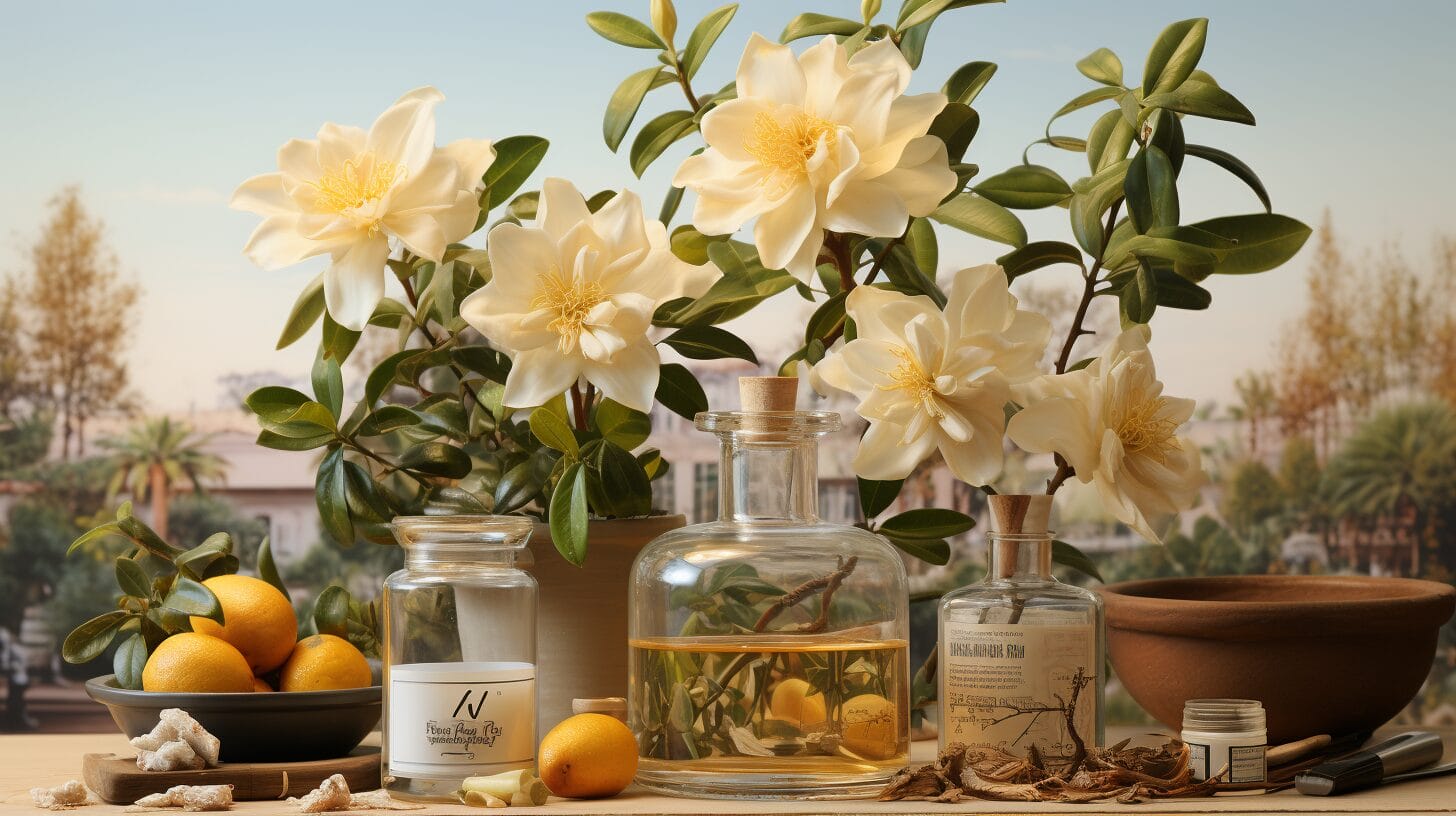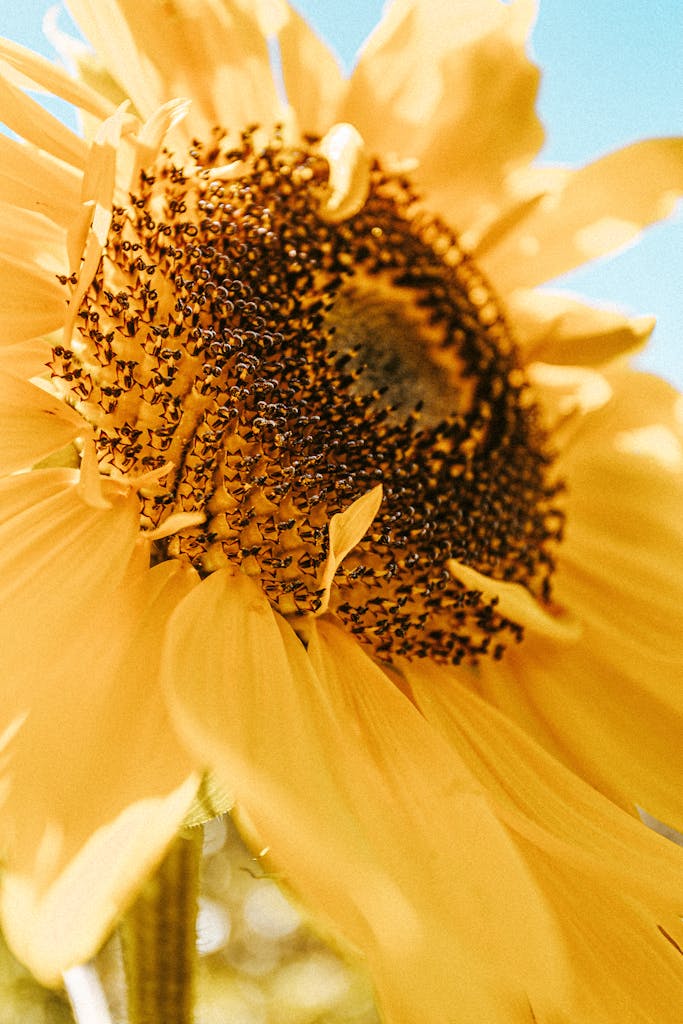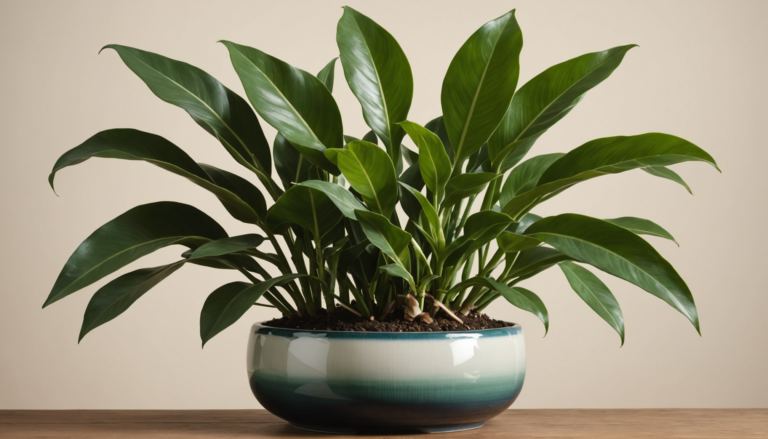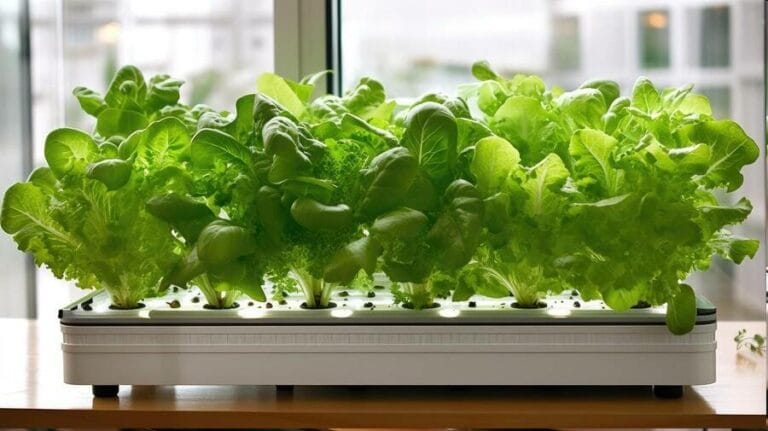Much like the phrase, “A stitch in time saves nine,” prompt intervention when you see the first yellow leaf on your gardenia could be the key to preserving your gorgeous plant. It’s imperative to respond quickly to safeguard your gardenia’s wellbeing.
As for Gardenia yellow leaves, vinegar can be the panacea for your plant’s ailments, but before you douse your plant in this acidic solution, it’s imperative to understand the potential repercussions. For Gardenia yellowish leaves, vinegar can be a useful tool for adjusting soil pH, and it may also help in preventing fungal infections. However, excessive use of vinegar can harm the plant and burn the roots. It is always best to dilute the vinegar before using it on your plants. Similarly, when using vinegar for rose bushes, it’s important to do so sparingly and with caution to avoid any negative effects on the plant’s health.
In this discussion, you’ll uncover whether vinegar is truly a friend or foe to your gardenia. By examining the science behind soil pH levels and the delicate balance required for optimal plant health, you’ll be guided through alternative methods that could be more beneficial for your yellowing gardenia.
Stay tuned, as you’re about to discover how to navigate the tricky waters of plant care, ensuring your gardenia thrives without falling victim to well-intended but misguided home remedies.
Key Takeaways
- Yellow leaves on gardenia plants can be caused by nutrient deficiencies, pH imbalance, improper watering practices, pests and diseases, and environmental factors.
- Gardenias have specific nutrient needs, including nitrogen and magnesium, and require acidic soil for optimal growth.
- Natural treatments for gardenia yellow leaves include using a vinegar solution to lower soil pH, Epsom salt for magnesium deficiency, coffee grounds for soil acidity, and organic compost for nutrient deficiencies.
- Preventing yellow leaves involves proper watering practices, finding the right balance of sunlight, using natural pest control methods, regular health checks and pruning, and creating an environment for gardenias to thrive.
Understanding the Causes of Yellow Leaves on Gardenia Plants

When gardenia leaves turn yellow, it signals an imbalance in care or environment that requires correction. Nutrient deficiencies often cause yellowing, so ensure balanced nutrition, especially iron. Soil pH also matters – gardenias prefer acidic soil to properly absorb nutrients.
Finally, carefully manage watering to avoid root rot from overwatering or dehydration from under-watering. Your gardening choices determine whether your gardenia can thrive.
Why Do Gardenia Leaves Turn Yellow: Nitty Gritty of Fertilizer & Nutrient Needs
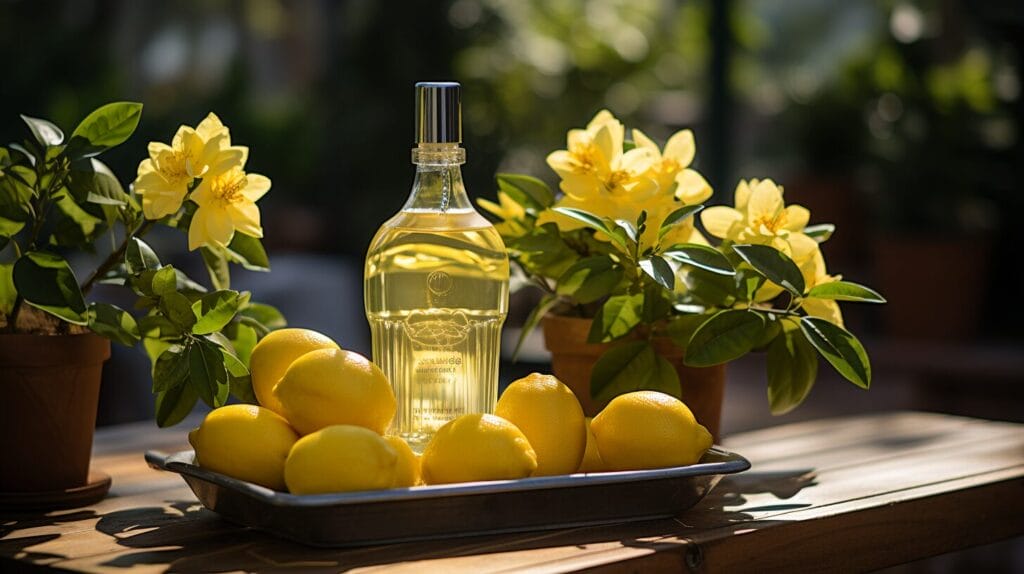
Understanding the precise fertilizer and nutrient needs of your gardenia is crucial, as improper nourishment can lead to the alarming sight of yellow leaves. Your gardenia is a bit of a diva – it demands just the right care, or it’ll surely let you know something’s amiss. Let’s zero in on what your green beauty really craves, so you can keep those leaves lush and vibrant.
When it comes to feeding your gardenia, you’re not just sprinkling some run-of-the-mill plant food and calling it a day. Here’s what you need to watch out for:
- Nitrogen: This is the lead singer of the nutrient band – without enough nitrogen, your gardenia’s leaves can turn yellow because they aren’t getting the essential component for chlorophyll production.
- Magnesium Deficiency: When your gardenia is low on magnesium, those lower leaves start to yellow at the edges. It’s like the plant’s waving a flag at you, begging for a magnesium boost.
- Acidic Soil: Gardenias are like those coffee connoisseurs who refuse anything but a perfect pH balance. If your soil isn’t acidic enough, the nutrients become less available, leading to yellow leaves.
- Incorrect Fertilizer Use: Not all fertilizers are created equal. Use one that’s made for acid-loving plants, and follow the instructions to the letter. Overdoing it can burn the roots of your gardenia, causing yellow leaves. It is wise to maintain the water within the acceptable limit of the drainage system.
How to Treat Yellow Leaves on Gardenia Plants Naturally
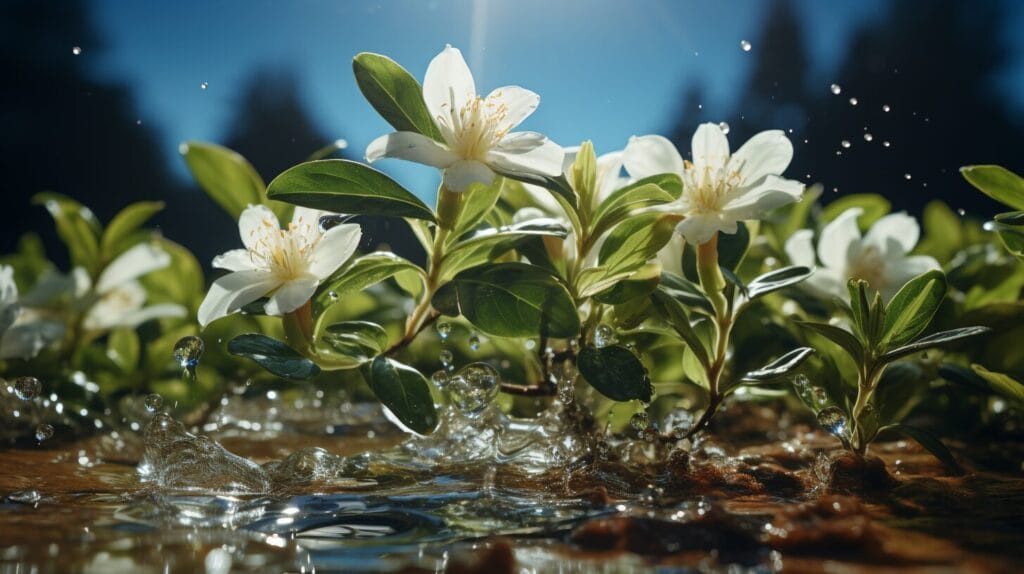
Treating Yellow Gardenia Leaves Naturally
• Use a vinegar solution – Mix water and vinegar (apple cider is best) to gently lower pH and increase soil acidity. But don’t overdo the vinegar.
• Try Epsom salt – Sprinkle 1 tablespoon around the base and water in. Epsom salt provides magnesium which can help correct deficiencies.
• Add used coffee grounds – They are acidic and help make soil more acidic when mixed in.
• Incorporate organic compost – Compost improves soil structure and slowly releases key nutrients like iron that gardenias need.
Preventing Yellow Leaves on Your Gardenia Plants
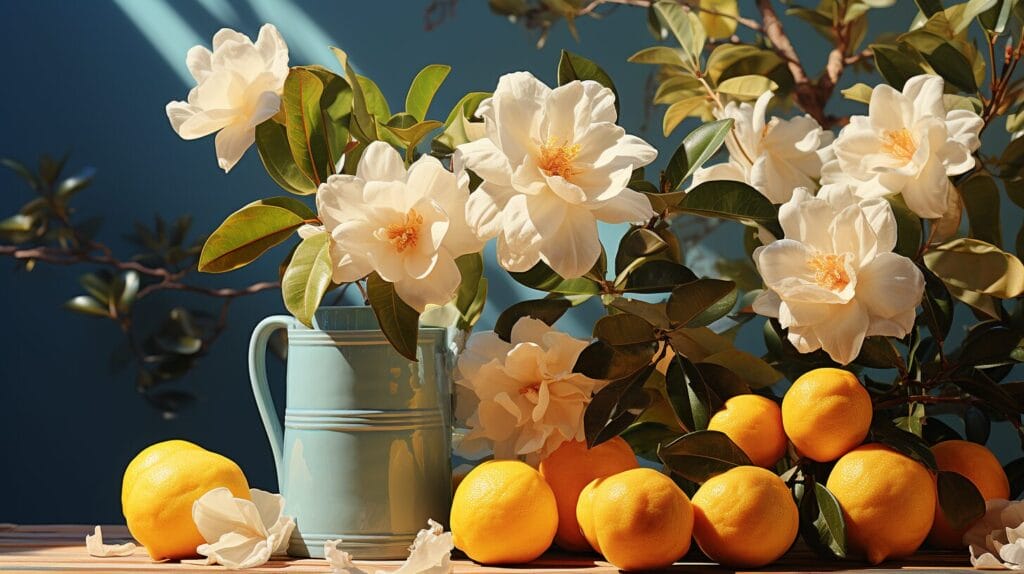
While natural treatments can revitalize yellowing gardenia leaves, proactive measures are key to preventing the discoloration from occurring in the first place. Here are a few strategies to keep your gardenias green and flourishing:
- Ensure Proper Watering: Over-watering can be just as detrimental as under-watering. Maintain the soil consistently moist, but not soggy.
- Sunshine Management: Gardenias enjoy bright, but not direct, sunlight. Find that sweet spot for your plant.
- Natural Pest Control: Use nature’s remedies like a gentle soapy water spray to keep pests at bay.
- Regular Health Checks: Prune any dead or yellowing leaves to encourage new growth and prevent spread.
Practical Tips for Reviving Your Yellowing Gardenia Plant
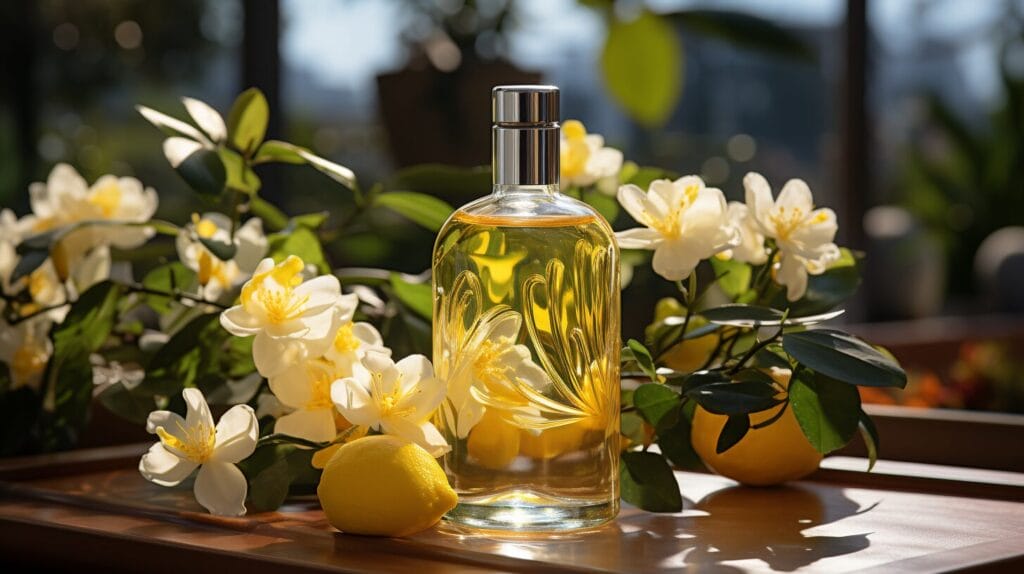
The moment your gardenia’s leaves start to turn yellow, act swiftly to handle the underlying issues – such as iron deficiency – and revive the green leaves of your plant. Here’s a guide to reviving your yellowing gardenia:
- To Prevent Gardenia Leaves from Turning Yellow, Flush the Soil with a Gallon of Water to Handle Alkaline Conditions: If you’ve used a vinegar solution and your gardenia leaves are turning yellow, flush the soil with water to remove excess acidity.
- Prune Stems: Prune any yellow or dead stems to encourage new growth.
- Monitor Pests: Keep a lookout for pests and address any infestations promptly.
Sometimes, repotting your plant may provide fresh soil and more room to grow. If problems persist, seek professional help.
Conclusion
Vinegar isn’t the cure-all for your gardenia’s yellow leaves. Focus on balanced nutrition, proper watering, and natural pest control. Healthy gardenias thrive with the right care, not quick fixes. Flush out any vinegar you’ve added, check for root rot, and give your plant the TLC it deserves. With patience and the right approach, your gardenia can bounce back to green splendor.
Frequently Asked Questions
Why are my gardenia leaves turning yellow?
There could be several reasons. It might be due to overwatering or underwatering, soil deficiency especially lack of iron, extreme temperatures, pest infestation, or plant diseases. You need to inspect your plant carefully to understand the exact cause.
Could pests be causing my gardenia leaves to turn yellow?
Yes, pests like aphids and mites can cause discoloration in leaves. These pests feed on the sap of the plant which can lead to yellow and even falling off of the leaves.
How can one prevent gardenia yellow leaves vinegar included?
Regular care is necessary for the gardenia plant. Water the plant regularly but avoid overwatering. Make sure the soil is well-draining. Gardenias also need a fair amount of sunlight, but not direct harsh sunlight. Regular pest inspection and occasional use of a suitable fertilizer can also prevent the leaves from turning yellow.
Why are the bud and new leaves of my gardenia turning yellow?
Buds and new leaves turning yellow can be a result of overwatering or poor nutrition. Make sure you’re not overwatering the plant and that the plant has all its necessary nutrients. Sometimes, a lack of certain nutrients like iron can cause new leaves to turn yellow and drop.
What leads to yellow old leaves in gardenias?
Older leaves tend to turn yellow due to the natural aging process. To allow for new green leaves, it is common for a gardenia plant grown indoors to shed its old leaves. However, if yellowing also appears on new leaves, it is a signal of other problems like nutrient deficiency, overwatering, or pest infestation.

